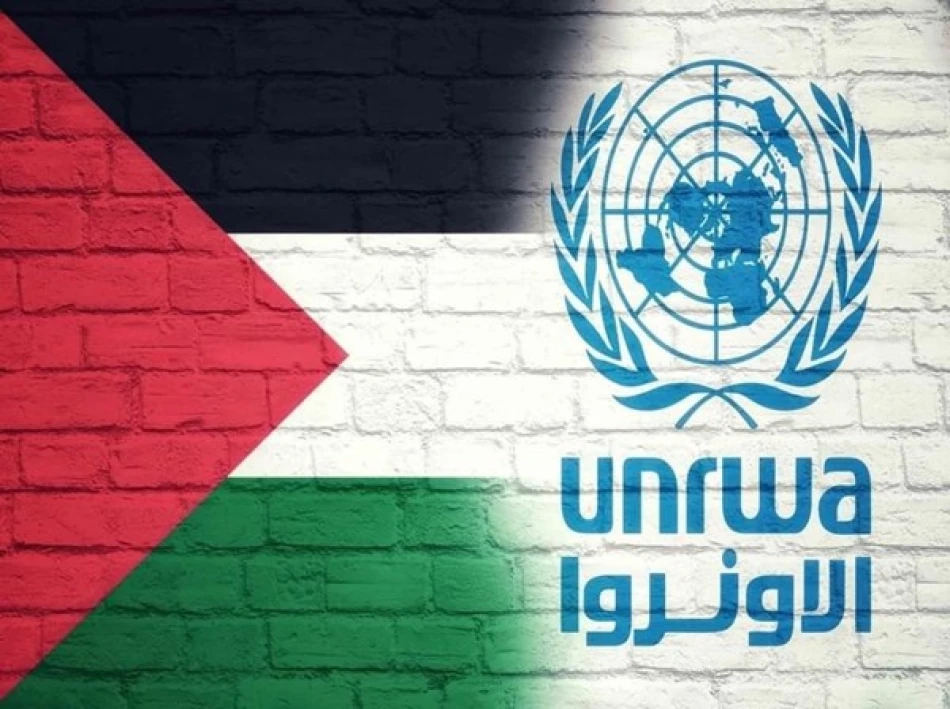
UNRWA Warns of Alarming Rise in Malnutrition Rates in Gaza Strip
Gaza Faces Critical Malnutrition Crisis as Aid Blockade Enters Fifth Month
The United Nations Relief and Works Agency (UNRWA) has reported alarming malnutrition rates among Gaza's children, with one in ten now suffering from conditions rarely seen before the current conflict. The crisis has intensified over the past four months as Israel tightened restrictions on aid deliveries, leaving over 6,000 trucks loaded with food, medicine, and supplies stranded outside the territory while the healthcare system crumbles under unprecedented demand.
Unprecedented Health Emergency Unfolds
UNRWA's health teams have screened more than 240,000 children across Gaza's medical facilities since January 2024, revealing a stark transformation in the territory's nutritional landscape. According to Juliette Touma, UNRWA's Director of Communications, malnutrition—previously a rare occurrence in Gaza—has become a defining feature of the humanitarian crisis.
The deteriorating situation reflects a broader collapse of Gaza's social infrastructure. Before the current conflict, Gaza maintained relatively stable malnutrition rates despite years of blockade, supported by international aid and local agricultural production. The current crisis represents a fundamental shift in the territory's ability to sustain its population.
Healthcare System Reaches Breaking Point
The surge in malnourished children threatens to overwhelm Gaza's already devastated healthcare infrastructure. UNRWA reports that nearly 60% of essential medications have been depleted, while therapeutic supplies specifically designed for treating childhood malnutrition have virtually disappeared.
This medical supply crisis occurs against the backdrop of a broader humanitarian blockade. Since March 2, UNRWA has been prevented from bringing any humanitarian assistance into Gaza—a restriction that has persisted for over four months. The organization's food supplies were exhausted by late April, creating a cascade of health complications that extend far beyond immediate hunger.
Aid Bottleneck Highlights Broader Policy Failures
The image of 6,000 aid trucks waiting outside Gaza while children suffer from malnutrition inside illustrates the complex intersection of military strategy and humanitarian law. These vehicles, loaded with food, hygiene supplies, and medications, represent a lifeline that remains tantalizingly out of reach for Gaza's 2.3 million residents.
The current aid restrictions mark a significant escalation from previous blockade policies. Even during Gaza's most challenging periods over the past decade, humanitarian organizations typically maintained some access for essential supplies. The complete halt to UNRWA operations represents an unprecedented level of isolation for the territory.
Regional Implications for Humanitarian Operations
UNRWA's operational challenges in Gaza contrast sharply with its continued work in the West Bank, where the organization reports that movement restrictions—while significant—have not completely halted service delivery. The agency's 14,000 local staff members continue providing primary healthcare and education services to Palestinian refugees and other vulnerable populations.
This operational divide between Gaza and the West Bank highlights the varying degrees of humanitarian access across Palestinian territories. While West Bank operations face logistical challenges, Gaza's complete aid cutoff represents a qualitatively different crisis that could have lasting implications for international humanitarian law and precedent.
Long-term Consequences for Child Development
The malnutrition crisis affecting Gaza's children carries implications that extend far beyond immediate health concerns. Childhood malnutrition creates lasting developmental impacts, affecting cognitive function, immune system development, and long-term health outcomes. For a population where nearly half of residents are under 18, these nutritional deficits could shape Gaza's human capital for decades.
The current crisis also tests international humanitarian frameworks designed to protect civilian populations during conflicts. The systematic restriction of aid to a territory experiencing widespread child malnutrition raises questions about the effectiveness of existing international legal mechanisms and the political will to enforce humanitarian protections.
As UNRWA continues its operations with dwindling resources, the organization's ability to maintain basic services depends increasingly on political decisions made far from Gaza's medical clinics. The resolution of this crisis will likely require not just humanitarian intervention, but fundamental changes to the policies that have created this unprecedented aid blockade.
Most Viewed News

 Layla Al Mansoori
Layla Al Mansoori






